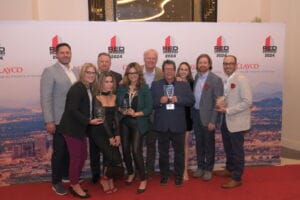How many commercial property owners want to pay for two roofs? I can see all the hands raising out there, signaling the overwhelming joy that property owners get from not only paying for a single roof, but – wait for it – a second one. It is a reality is that many property owners find themselves in, most without realizing it.
Consider the following scenario. The owner of an office building finds themselves in a tough, but all too familiar, situation of roof damage to the point that it needs to be replaced.
The price tag of $45,000 hurts a bit, but not quite as much as it hurts when the property owner visits their tax professional. Their tax professional informs them that the roof must be capitalized and depreciated over 39 years. To quickly summarize, that is $45,000 out of the property owner’s checking account and only a yearly tax deduction of $1,154. At a 39% tax rate, this brand new roof results in a yearly tax savings of $450.
But wait, it gets better. Remember that I mentioned two roofs? That’s because the old roof was disposed and never fully expensed. The old roof was also depreciated over 39 years. If the property owner owned the property for five years, they would have 34 years left on the old roof. Said another way, they would have 87% left to depreciate. So now, the property owner is paying for not one, but two roofs!
Now that I have ruined your day, let me try to fix it. There is a way to make sure that the owner not only gets a deduction of the old roof, but also sets up the rest of the property in the most tax advantageous way.
We use two separate but related tax strategies – domestic production activities deduction (DPAD) and cost segregation. DPAD is how the IRS deals with assets that are fully or partially disposed of. It defines the way the IRS would identify the quantity and remaining cost of assets. Although there are several acceptable ways of performing this, cost segregation is the IRS’ preferred way.
Cost segregation is an engineering-based study of all the assets of a property that assigns a quantity and remaining cost to each item. The identification of all of the assets allows them to be categorized into a more exact depreciation schedule. This moves several assets out of the
27.5/39-year depreciation schedule and into a much faster 5/7/15 year modified accelerated cost recovery system (MACRS) schedule. The result is an accelerated depreciation schedule and large up-front deductions.
Returning to the owner of the two roofs scenario, if the owner performs a cost segregation study, the old roof can be disposed and the remaining amount of $39,230 would be taken as a deduction in the current year. In addition, due to the segregation of the entire building, the remaining assets could give a large enough deduction to offset the cost of the roof, assuming there was enough income to offset. With cost segregation and DPAD, the owner takes the “lemons” of paying for two roofs and “makes lemonade.”
Scott Roelofs, CFA, ABV, is the owner of RCG Valuation & Monetization, Inc.




